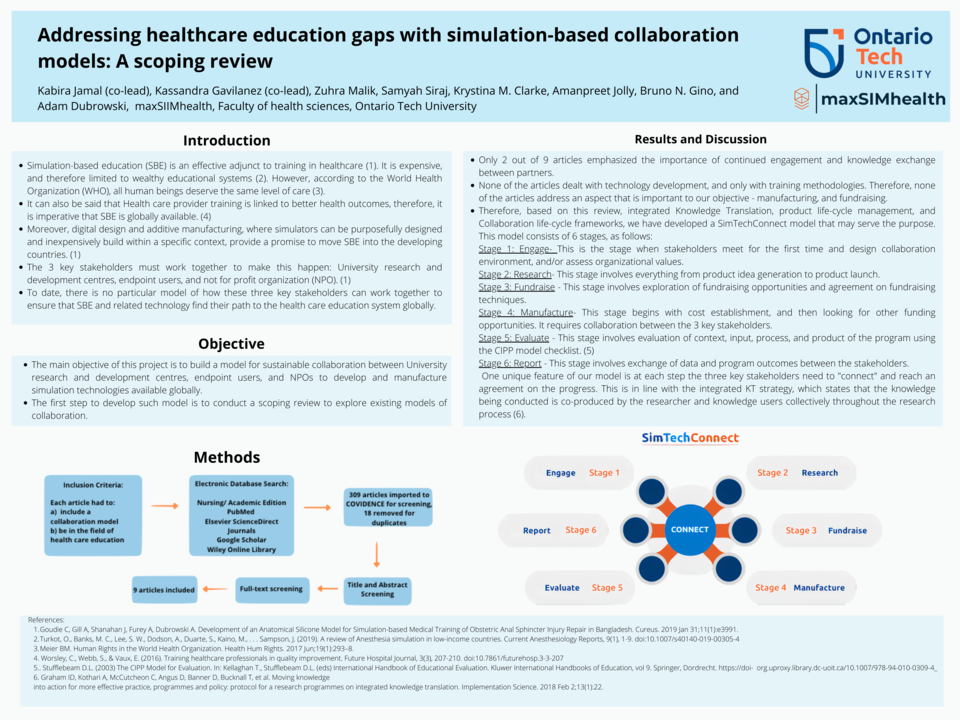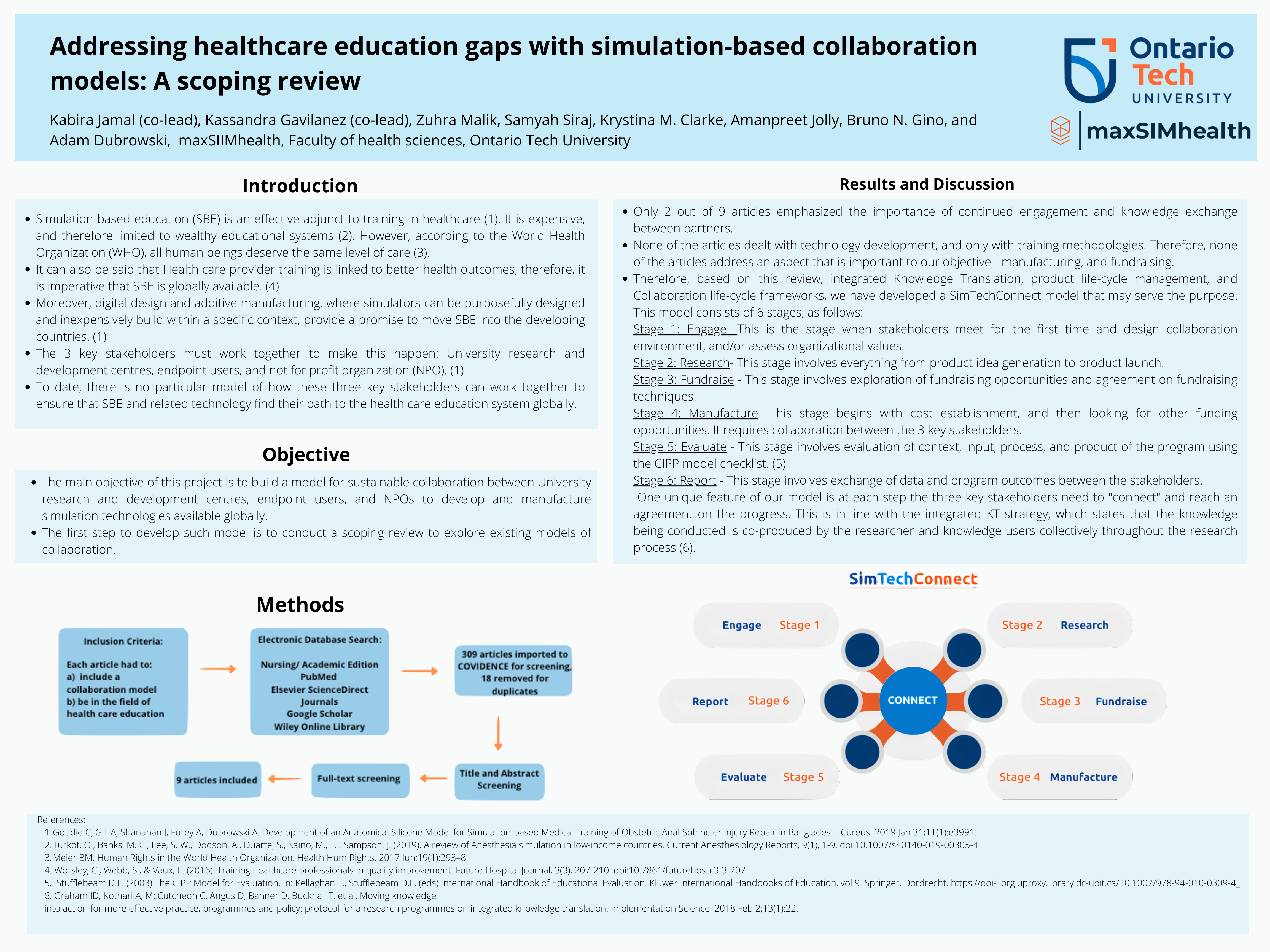Abstract
Introduction: Simulation-Based Education (SBE) is an effective adjunct to training in healthcare. It is expensive, and therefore, limited to wealthy countries. The main objective of this project is to build a model for sustainable collaboration between three key stakeholders, university research and development centres, endpoint users, and not-for-profit organization (NPO), to develop and manufacture simulation technologies to be made available globally. The first step to develop such a model is to conduct a scoping review to explore existing models of collaboration.
Methods: When conducting the scoping review inclusion and exclusion criteria were taken into consideration. Inclusion criteria ensures that each article has a collaboration model and is in the field of healthcare education. The exclusion criteria consisted of k-12, grade school, and profit models. The databases that were used in the scoping review included nursing/ Academic Edition, PubMed, Elsevier ScienceDirect Journals, Google scholar, and Wiley Online Library. The following keywords were used: collaboration,” “university partnerships,” “university collaboration,” “non-profit organization collaboration,” “cross-sector partnerships,” “cross-sector collaboration,” “university” and “nonprofit partnerships. Using the citation software Zotero 5.0.96 309 articles were imported into Covidence for screening, and 18 duplicates removed. After the title and abstract screening and full-text screen, ultimately 9 articles were considered relevant to the topic
Results: Only 2 out of 9 articles emphasized the importance of continued engagement and knowledge exchange between partners. None of the articles address two specific needs of our objective in the models they have presented, manufacturing and fundraising.
Discussion: None of the nine articles found dealt with technology development for education, but rather with methodologies. Therefore, none of the suggested models can be used for the intent of our work. However, components from each article can be integrated to inform the development of a new model for collaboration.
Based on this scoping review, we propose a new model of collaboration in SBE between the three key stakeholders that will incorporate integrated Knowledge Translation (iKT) throughout each stage of the model. The model consists of 6 stages that will need to be executed in sequential order to form the new SimTechConnect Model. The 6 stages of the model, in their respective order from stage 1 to 6 are engage, research, fundraise, manufacture, evaluate, and report, with the center being ‘connect’ to incorporate iKT throughout.
The unique feature of this model is that at each step the three key stakeholders need to "connect" and reach an agreement on the progress. This is in line with the integrated KT strategy, which states that the knowledge being conducted is co-produced by the researcher and knowledge users collectively throughout the research process.
Conclusion: A scoping review was conducted to determine if there is an existing model that addresses a NPO and university collaboration within the context of SBE. The scoping review identifies the need for a new model of collaboration to address the simulation technology availability gaps. The SimTechConnect model has been developed to serve as a mechanism for allowing SBE and related technology to be incorporated into the health care education system globally.






